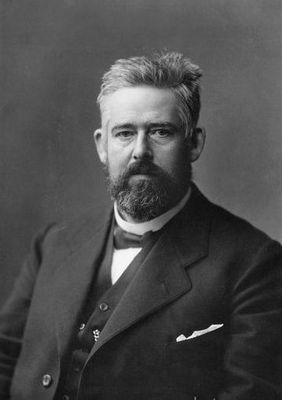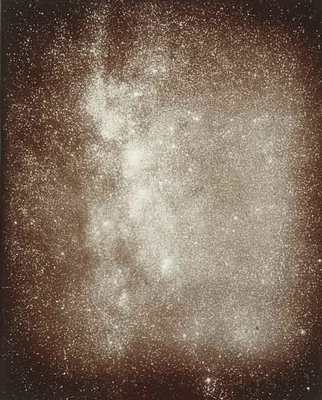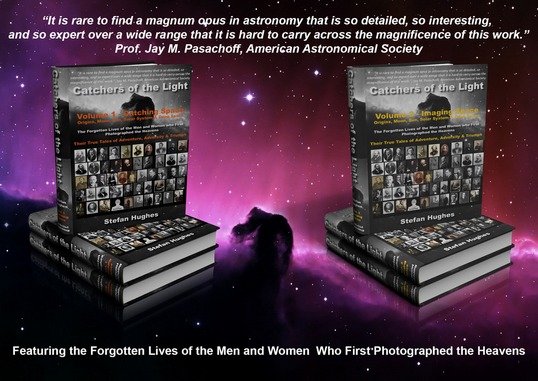'The Verminator'
 Born: 21st June 1863; Heidelberg, Baden-Württemberg, Germany
Born: 21st June 1863; Heidelberg, Baden-Württemberg, Germany
Died: 3rd October 1932; Heidelberg, Baden-Württemberg, Germany
Max Wolf was the first person to discover an Asteroid by means of Photography when in 1891, he imaged No. 323 Brucia; which he named after Catherine Wolfe Bruce who later funded the construction of the 16-inch Double Astrograph at the Landessternwarte Heidelberg-Königstuhl. Later, Wolf helped Carl Pulfrich of the optical firm of Carl Zeiss Jena in the development of the Stereo Comparator, a device used as an aid to the discovery of asteroids and supernovae.
Max Wolf (1863-1932) was given a name so German, it told everyone who met him, that this was a person who would make something of himself. Although, Maximilian Franz Joseph Cornelius Wolf was his birth name, he preferred wisely from an early age, to be called just Max Wolf. Despite spending nearly all of his life in his native town of Heidelberg, he grew up to be one of the great pioneers of Astrophotography and a respected Astronomers of his time.
It was in the field of ‘vermin’ that Max Wolf first made his name known to astronomers, not the creatures with long tails and fleas which plagued Europe, during the ‘Black Death’, but the lumps of rock and iron that litter the space between the orbits of the planets Mars and Jupiter.
On the 1st of January 1801, the Italian astronomer and Catholic priest, Guiseppe Piazzi (1746-1826) discovered the first ‘vermin’ when he observed the asteroid or minor planet Ceres, an event which was greeted with great interest by the popular press of the time:
“An important circumstance in Astronomy has just occurred, no less than the Discovery of ANOTHER NEW PLANET!!! This celestial phenomenon moves between the orbit of Mars and Jupiter, and is an intermediate Planet between them. It was discovered by M. PIAZZI, an Italian Astronomer, on the 1st of January, 1801. He concealed the discovery, to preserve all the honour and observations to himself, till after six weeks close watching, he fell ill.
It will not be in a situation, with regard to the Sun, to be observed again, till a month or two hence. It is but a small Planet, ranking only as a star of the eighth magnitude, and therefore not visible to the naked eye. Its motion is nearly parallel to the ecliptic, at present about 4½ to the north of it, and nearly entering the sign Leo. The distance from the Sun is about 2½ times that of the earth, and the periodical time nearly four years and two months.—other particulars shall be given in our next...”
A second asteroid Pallas was discovered on the 28th of March 1802 by Heinrich Wilhelm Olbers (1758-1840). In the years that followed more and more of these bodies had been discovered. By 1850 there were ten and by 1891 their numbers had risen to over three hundred. They had become the ‘Vermin of the Sky’, a somewhat derogatory and unfair phrase first used by the Austrian astronomer, Edmund Weiss (1837-1917).
On the 22nd of December 1891 Maximilian Franz Joseph Cornelius Wolf had lived up to his name and discovered Vermin No. 323 which he called ‘Brucia’. What was so remarkable about this discovery was that Wolf had found it on a Photographic Plate and not through the eyepiece of a telescope. More photographic discoveries followed and during the period 1891 to 1894 he had discovered a total of 21.
A new age of ‘Vermin’ study had been begun by Wolf, in which these bodies once seen as ‘pests’ became more like ‘pets’ to astronomers, who now realized that asteroids could hold vital clues to man’s understanding of the origin of our Solar System and the Earth itself.
However, it was his work on the development of the Stereo-comparator, a device that allowed the operator to view two photographic plates simultaneously, and to determine if any objects had moved in the two images, was perhaps his greatest legacy to astronomy. It was a device which revolutionized the discovery of not only asteroids by photographic means, but virtually automated the detection of supernovae. Today, software has largely replaced the need for optical stereo-comparators, and their successor the blink-comparator.
In the field of Astrophotography, Max Wolf, took images of many of the most well known ‘nebulae’ in the heavens, Even to this day his images are amongst the finest ever seen. He also used photography to discover over 1100 Deep Space Objects (DSOs) now included in Dreyer’s Index catalogue (IC). The modern Astrophotographer owes Wolf a great debt, for it was he who first imaged a number of the more challenging targets including the ‘Cocoon’ Nebula (Sh2-125) and its associated open cluster IC 5146, in Cygnus and the ‘Cave’ Nebula (VdB 152) in Cepheus.
To read more on their life and work read the eBook chapter on Maximilian Franz Joseph Cornelius Wolf or buy the Book 'Catchers of the Light'.

The Milky Way in the Constellation of Cassiopeiae, Max Wolf, 1901

Buy the eBook or Printed Book at the 'Catchers of the Light' shop.